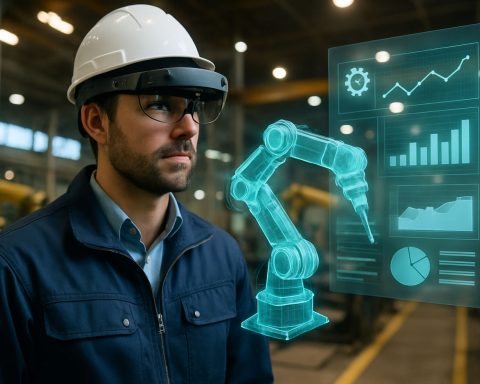- BYD aims to enter Japan’s minicar market with eco-friendly electric vehicles by 2026, challenging domestic automakers.
- The introduction of BYD’s minicars could transform urban transportation in Japan, offering silent, efficient driving experiences.
- Success in Japan requires BYD to tailor its advanced electric platform to meet the country’s strict kei car standards, emphasizing size, efficiency, and affordability.
- BYD’s entry may drive innovation and competition, aligning with Japan’s carbon neutrality goals and promoting sustainability.
- This move could reshape consumer expectations, balancing cutting-edge technology with traditional minicar charm.
- BYD’s venture highlights the potential for foreign automakers to make significant impacts in established markets through innovation and adaptability.
Electric vehicles are not just silent machines changing the hum of city streets—they’re a revolution on wheels, and China’s BYD is steering directly into the heart of Japan’s beloved minicar market. In a bold bid to redefine urban mobility, BYD is setting its sights on the land of the rising sun, aiming to introduce its futuristic, eco-friendly minicars as early as 2026.
Imagine navigating Tokyo’s bustling streets, weaving through narrow alleys lined with time-honored shrines, aboard a vehicle that whispers rather than roars—this is the promise BYD is bringing to Japan’s renowned kei-jidosha segment. These lightweight vehicles, revered for their compact size and efficiency, are deeply woven into Japan’s automotive identity, making up nearly 40% of the nation’s car market. Yet, they have long been an enigmatic challenge for foreign automakers, who face stiff competition from domestic stalwarts who have mastered the art of crafting these diminutive dynamos.
Entering this tightly sealed domain demands not only technological prowess but an unparalleled understanding of local sensibilities. BYD, short for “Build Your Dreams,” embodies the ambition of a new automotive era. Known globally as a titan in the electric vehicle industry, BYD’s strategy involves tailoring its advanced electric platform to meet Japan’s strict standards for minicars. This measure is crucial, as kei cars are defined by precise criteria: small in size, efficient in fuel consumption, and most importantly, affordable.
These electric creations could redefine the driving experience. Picture a minicar that zips silently through the vibrant neon-lit districts of Shibuya, powered by innovative battery technology that delivers both range and robustness. BYD’s entry could prompt shifts in consumer expectations, heralding a new chapter of sustainability in Japan, where the harmony between technology and tradition is ever delicate.
The implications are significant. Domestic manufacturers have long enjoyed a dominance earned through a nuanced understanding of Japanese terrains and consumer desires. Now, BYD must not only emulate but innovate, offering a product that appeals to the environmentally conscious and tech-savvy demographic without alienating those who cherish the conventional charm of their pint-sized chariots.
The potential impact extends beyond mere market dynamics. BYD’s move might invigorate the Japanese automotive landscape, sparking advancements and new collaborations in green technology sectors. As Japan marches towards its ambitious carbon neutrality goals, the introduction of BYD’s electric minicars could accelerate the country’s path to sustainability, shaping a cleaner, quieter future for urban transportation.
This audacious venture poses a compelling question: can BYD, a foreign contender, shift gears in Japan’s tightly-knit minicar market? As anticipation builds, one thing is certain: the road ahead is electric, and its journey promises exciting new horizons for Japan’s iconic minicars.
BYD’s Bold Move: The Promise and Challenges of Electric Minicars in Japan
BYD’s Entry into Japan’s Kei Car Market: What You Need to Know
China’s BYD is preparing to introduce its electric minicars into Japan’s iconic kei car segment by 2026. The undertaking represents a significant shift in the Japanese automotive market, traditionally dominated by domestic giants known for their compact and efficient vehicles. BYD’s venture aims to deliver an environmentally friendly urban mobility solution, tailored to Japan’s stringent standards for efficiency and affordability.
How Does BYD Plan to Succeed?
1. Tailored Designs for Local Sensibilities: BYD is refining its electric vehicle platforms to meet the kei car standards, which strictly regulate size, power output, and affordability. Understanding and integrating local cultural preferences will be key to appealing to Japan’s consumer base.
2. Innovative Battery Technology: BYD’s advanced battery systems offer competitive range and longevity, critical for urban drivers. The focus is on delivering rechargeable solutions that enhance both performance and environmental benefits.
3. Collaborative Opportunities: BYD might explore partnerships with Japanese technology firms or automotive companies to streamline its entry and bolster consumer confidence.
Real-World Use Case
Consider the typical Tokyo commuter navigating through narrow city streets in a BYD minicar. An electric drivetrain reduces noise pollution, creating a serene driving environment. Additionally, the compact design makes it easier to park in Tokyo’s densely populated areas, further enhancing its practical appeal.
Industry Trends and Market Forecast
Japan is committed to carbon neutrality by 2050, pushing automotive innovation towards sustainable solutions. Electric vehicles (EVs) are at the forefront of this evolution, with government incentives making them increasingly affordable. The Japanese market for EVs is projected to grow, underscoring BYD’s timely market entry.
Pros and Cons Overview
Pros:
– Environmental Impact: Reduction in emissions contributes to cleaner air in urban areas.
– Technological Innovation: BYD’s commitment to state-of-the-art battery technology positions it as a leader.
– Consumer Appeal: Modern, tech-savvy design may attract younger consumers.
Cons:
– Cultural Hurdles: Convincing loyal customers of traditional kei cars to switch may pose a challenge.
– Regulatory Challenges: Meeting Japan’s stringent automotive regulations requires careful adaptation.
Actionable Recommendations
– For Consumers: Consider the benefits of EVs, such as reduced operational costs and less environmental impact. Research available incentives for potential savings on EV purchases.
– For Auto Manufacturers: Exploring partnerships with local companies could leverage existing market knowledge and consumer trust.
– For Policymakers: Encouraging infrastructure improvements, like more charging stations, can facilitate broader EV adoption.
Conclusion: A Zipping Start or Slow Acceleration?
BYD’s foray into Japan’s kei car market is setting the stage for potential transformation in urban mobility. As the nation accelerates towards sustainability goals, the success of this initiative could redefine consumer preferences, inspire industry innovation, and invigorate Japan’s automotive landscape.
For further insights into electric vehicles and green technology, visit BYD and Nissan for more about industry shifts and cutting-edge vehicular technology.







